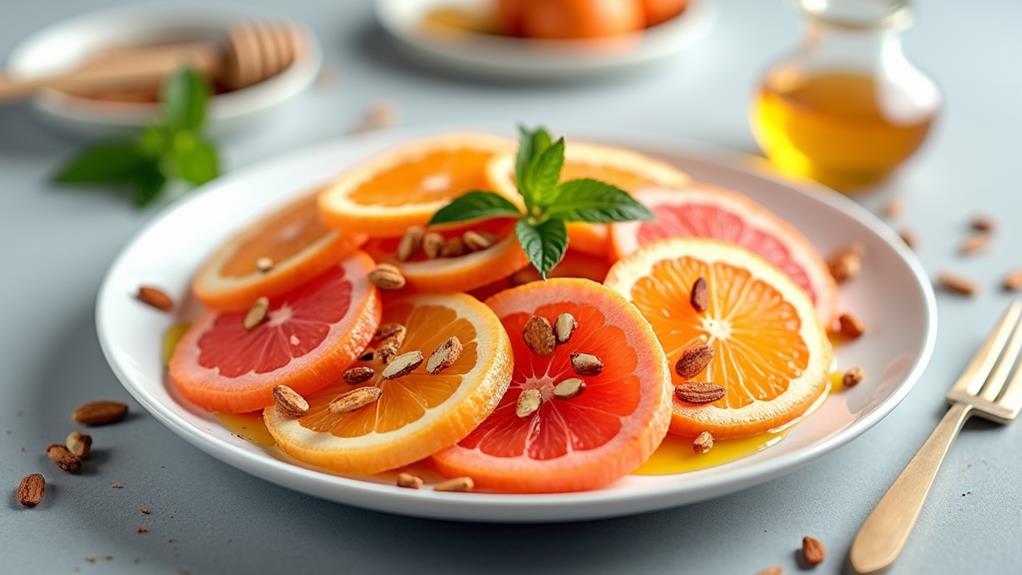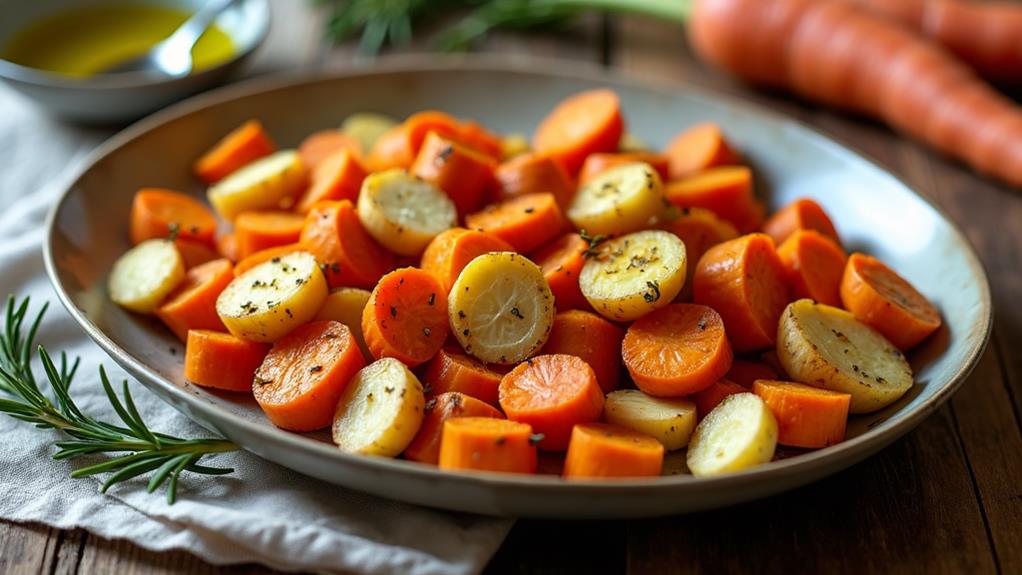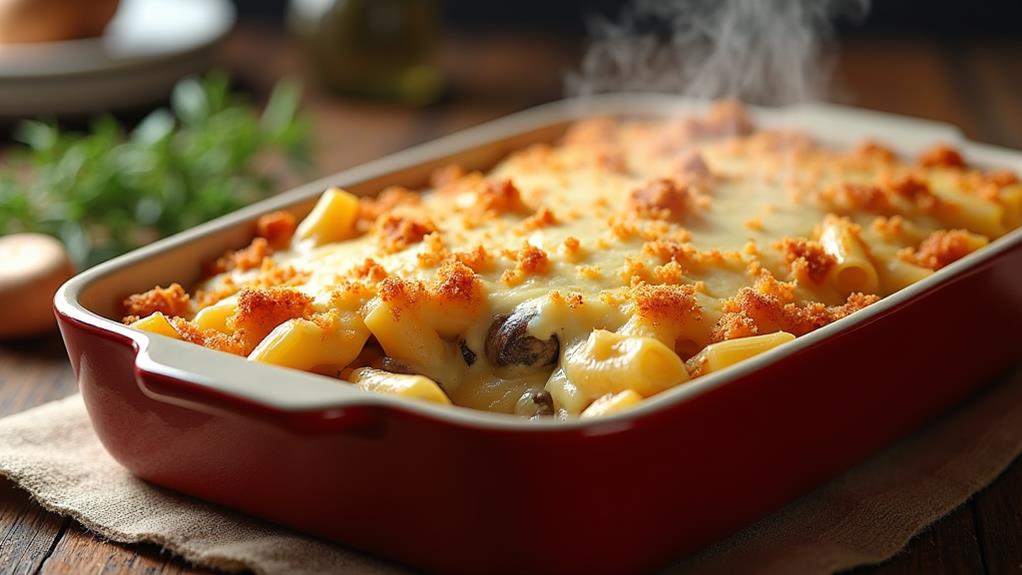Have you ever wondered how a humble vegetable could transform a classic comfort food? You're about to discover the delightful fusion of butternut squash and mac and cheese. This unexpected pairing brings together the rich, creamy texture of traditional mac and cheese with the subtle sweetness and nutritional boost of roasted butternut squash. It's a dish that elevates the ordinary to extraordinary, appealing to both kids and adults alike. As we explore the history, recipe, and cooking steps of this innovative dish, you'll find yourself eager to try this comforting yet sophisticated twist on a beloved favorite.
Key Takeaways
- Butternut squash mac and cheese combines traditional comfort food with added nutrition from the squash.
- The dish typically includes pasta, butternut squash, cheese, milk, and seasonings like salt and nutmeg.
- Preparation involves cooking squash and pasta separately, blending squash with milk, then combining with cheese and pasta.
- It's a popular fall dish that appeals to both health-conscious eaters and those seeking comfort food.
- The recipe can be customized with additional vegetables, spices, or toppings like breadcrumbs for extra flavor and texture.
History
Despite its modern popularity, butternut squash mac and cheese is a relatively recent addition to the culinary world. You'll find that this dish emerged as part of the comfort food revolution of the late 20th and early 21st centuries, when chefs and home cooks began experimenting with classic recipes to create healthier, more nutrient-dense versions.
The traditional mac and cheese, with its origins dating back to 14th century Italy, has long been a beloved staple. However, it wasn't until the 1990s that butternut squash started gaining widespread popularity in Western cuisines. As people became more health-conscious, they sought ways to incorporate vegetables into familiar dishes. The natural creaminess and subtle sweetness of butternut squash made it an ideal candidate for enhancing mac and cheese.
You'll notice that the combination of butternut squash and mac and cheese gained traction in the early 2000s, appearing in cookbooks, food blogs, and restaurant menus. Its rise coincided with the farm-to-table movement and the increasing emphasis on seasonal, locally-sourced ingredients.
Today, it's considered a fall favorite and a clever way to introduce vegetables to picky eaters.
Recipe
Butternut squash mac and cheese is a comforting and nutritious twist on the classic pasta dish. This recipe combines the creamy texture of traditional mac and cheese with the subtle sweetness of butternut squash, creating a satisfying meal that's perfect for cozy autumn evenings or any time you're craving a hearty dish.
With just five simple ingredients, this version of butternut squash mac and cheese allows the natural flavors to shine through. The butternut squash adds a velvety smoothness to the sauce while increasing the nutritional value of the dish, making it an excellent way to incorporate more vegetables into your diet.
- 1 medium butternut squash, peeled and cubed
- 16 oz macaroni pasta
- 2 cups shredded sharp cheddar cheese
- 1 cup milk
- 1 tsp salt
Begin by cooking the butternut squash in boiling water until tender, then drain and mash it.
In a separate pot, cook the macaroni according to package instructions. While the pasta is cooking, blend the mashed squash with milk and salt to create a smooth sauce.
Once the pasta is cooked, drain it and return it to the pot. Add the butternut squash sauce and shredded cheddar cheese, stirring until the cheese is melted and everything is well combined. Serve immediately.
For best results, use a sharp cheddar cheese to balance the sweetness of the butternut squash. If you prefer a thinner sauce, gradually add more milk until you reach your desired consistency.
To enhance the flavor and texture, consider topping your mac and cheese with a sprinkle of breadcrumbs or chopped herbs before serving.
This dish can be stored in an airtight container in the refrigerator for up to 3 days and gently reheated on the stovetop or in the microwave when ready to eat.
Cooking Steps
To create this comforting dish, you'll start by preparing the butternut squash and pasta separately.
Once the squash is tender and the pasta is al dente, you'll blend the squash with milk to create a smooth sauce.
Step 1. Peel and Cube Squash
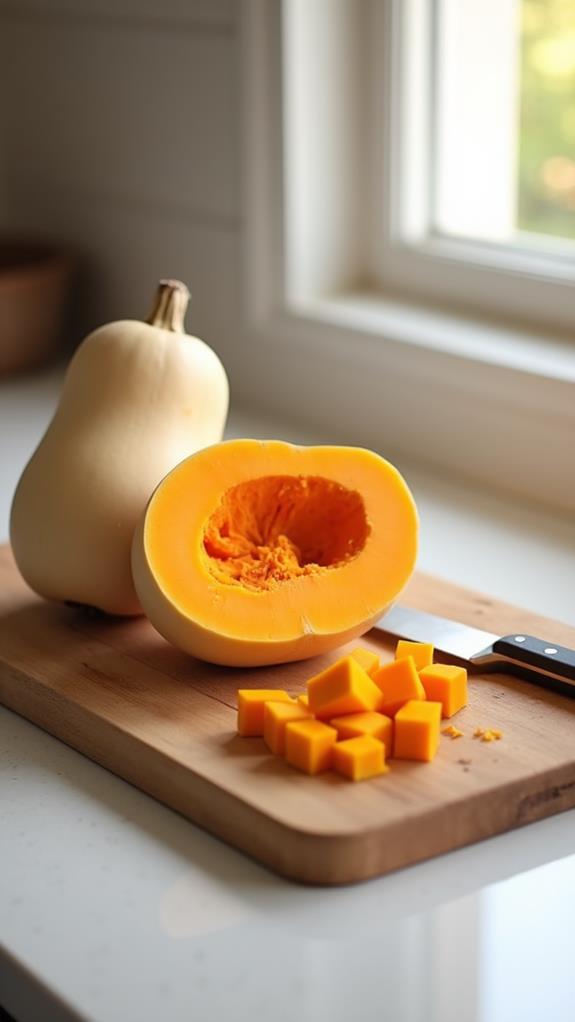
Start by washing the butternut squash thoroughly under cool running water.
Using a sharp vegetable peeler, remove the tough outer skin, making sure to peel away any remaining green lines.
Once peeled, cut off both ends of the squash with a sturdy chef's knife.
Next, stand the squash upright on your cutting board and carefully slice it in half lengthwise.
Scoop out the seeds and stringy bits from the center using a spoon. You can save the seeds for roasting later if you'd like.
Now, lay each half flat-side down and cut them into long strips, about 1 inch wide.
Finally, turn these strips and cut them crosswise into 1-inch cubes.
For uniform cooking, try to keep your cubes roughly the same size.
If you're working with a particularly large squash, you may want to cut it into slightly smaller pieces.
Remember, the smaller the cubes, the faster they'll cook.
Once you've finished cubing, you're ready to proceed with boiling the squash for your mac and cheese recipe.
Step 2. Boil Squash Until Tender
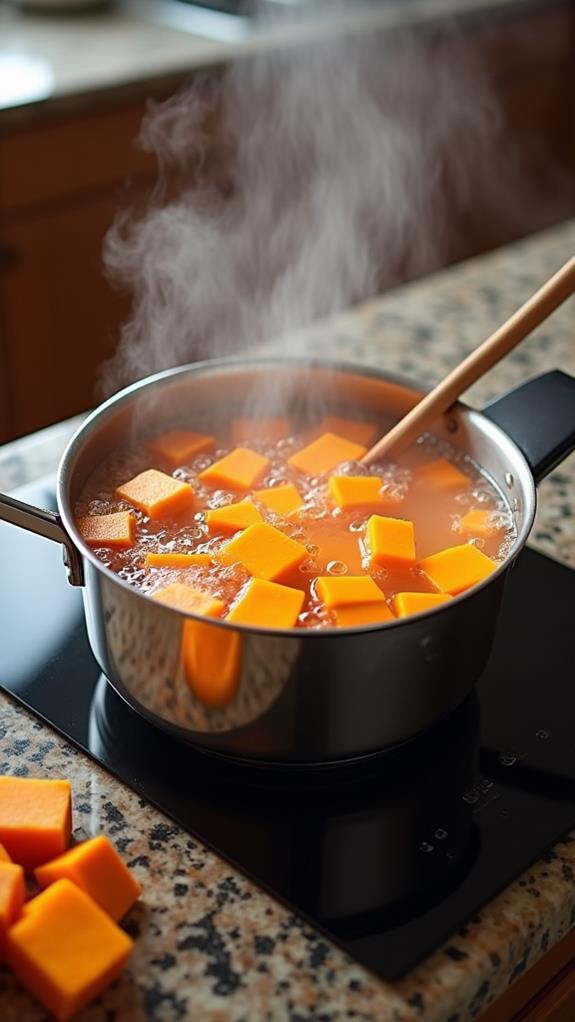
With your butternut squash cubed and ready, it's time to cook them until they're tender. Fill a large pot with water and bring it to a boil over high heat.
Once boiling, carefully add your cubed butternut squash to the water. You'll want to ensure there's enough water to fully submerge all the squash pieces.
Reduce the heat to medium and let the squash simmer. The cooking time will vary depending on the size of your cubes, but it typically takes about 15-20 minutes.
To check if they're done, gently pierce a cube with a fork. If it easily slides through, your squash is tender and ready. Be careful not to overcook, as this can lead to a watery consistency in your final mac and cheese dish.
Once tender, drain the squash in a colander, shaking gently to remove excess water.
Let it cool for a few minutes before proceeding to the next step. This cooling period will make it easier to handle and mash the squash for your creamy sauce.
Step 3. Cook Pasta Until Al Dente

While your butternut squash is cooling, it's time to cook the pasta. Fill a large pot with water and bring it to a rolling boil. Add a generous pinch of salt to enhance the pasta's flavor. Carefully pour in the macaroni, stirring gently to prevent the noodles from sticking together.
Cook the pasta according to the package instructions, but aim for al dente texture. This typically takes about 8-10 minutes, depending on the pasta shape and size.
To test if the pasta is al dente, fish out a single piece and bite into it. The center should have a slight resistance, but not be crunchy or raw. It's crucial not to overcook the pasta, as it will continue to soften slightly when mixed with the hot butternut squash sauce.
Once the pasta reaches the perfect al dente consistency, immediately remove the pot from heat. Drain the pasta in a colander, but don't rinse it with cold water. The starch on the pasta's surface will help the sauce adhere better.
Return the drained pasta to the pot, ready for the next step in creating your delicious butternut squash mac and cheese.
Step 4. Blend Squash With Milk
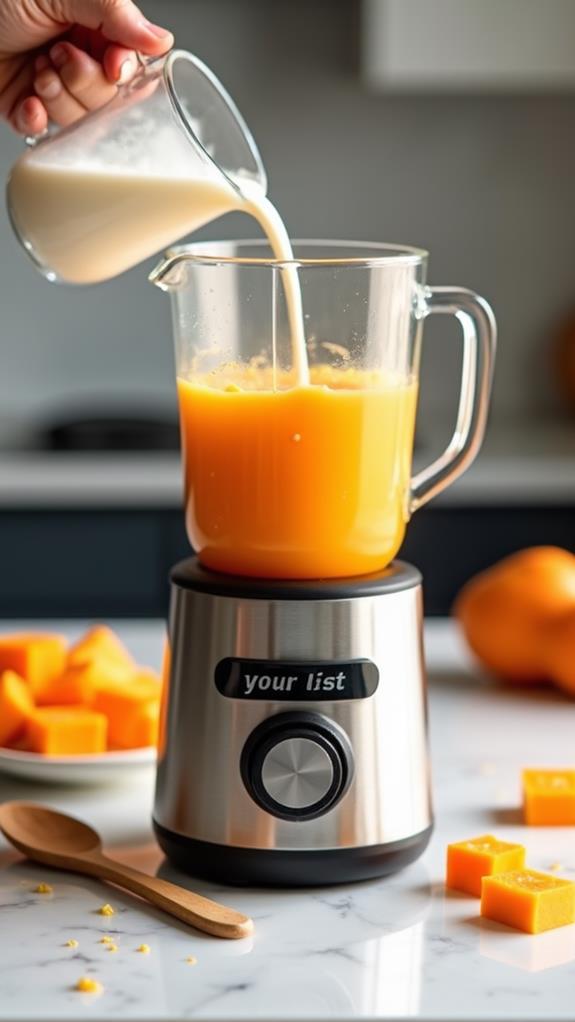
Now that your butternut squash has cooled slightly, it's time to blend it with milk to create a smooth, creamy sauce.
Transfer the mashed squash to a blender or food processor, adding milk gradually as you blend. You'll want to use about 1 cup of milk for every 2 cups of mashed squash, but feel free to adjust this ratio based on your desired consistency. Start with less milk and add more as needed to achieve a velvety texture.
As you blend, you'll notice the mixture becoming smoother and more uniform. Don't be afraid to let the blender run for a minute or two to ensure all lumps are eliminated.
If you're using a food processor, you may need to stop and scrape down the sides occasionally to ensure everything is well incorporated. Once you've reached a silky consistency, taste the sauce and add salt to enhance the flavors.
Step 5. Combine All Ingredients, Serve Hot

The final steps bring your butternut squash mac and cheese to life. Once you've blended the squash with milk and salt, it's time to combine all the elements.
Drain your cooked macaroni and return it to the pot. Pour the butternut squash sauce over the pasta, ensuring every noodle is coated. Add the shredded cheddar cheese gradually, stirring continuously to promote even melting and distribution. The heat from the pasta and sauce will help melt the cheese, creating a cohesive, creamy mixture.
As you stir, you'll notice the sauce thickening and the cheese fully incorporating. If the consistency seems too thick, don't hesitate to add a splash more milk. Keep stirring until you achieve a smooth, velvety texture. Taste and adjust the seasoning if necessary, adding more salt if needed.
Once everything is well combined and heated through, it's time to serve. Dish out generous portions into bowls or plates while the mac and cheese is still hot. For an extra touch, you can sprinkle some fresh herbs or breadcrumbs on top before serving.
Final Thoughts
For all its simplicity, this butternut squash mac and cheese recipe offers a delightful twist on a classic comfort food. You'll find that the natural sweetness of butternut squash complements the sharp cheddar cheese perfectly, creating a harmonious blend of flavors.
The creamy texture of the sauce, achieved by blending cooked squash with milk, elevates this dish beyond ordinary mac and cheese. Don't hesitate to experiment with additional seasonings or toppings to suit your taste. A sprinkle of nutmeg or a dash of black pepper can enhance the flavor profile, while breadcrumbs or chopped herbs add texture and visual appeal.
Remember, you can easily adjust the consistency of the sauce by adding more milk if needed. This versatile dish works well as a main course or a side dish, and it's sure to please both kids and adults alike.
Whether you're looking for a comforting weeknight dinner or a crowd-pleasing potluck contribution, this butternut squash mac and cheese is a reliable choice that combines nutrition and indulgence in one satisfying meal.


